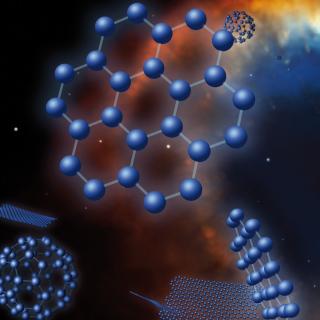Bibcode
Wanderley, Fábio; Cunha, Katia; Souto, Diogo; Smith, Verne V.; Cao, Lyra; Pinsonneault, Marc; Allende Prieto, C.; Covey, Kevin; Masseron, Thomas; Pascucci, Ilaria; Stassun, Keivan G.; Terrien, Ryan; Bergsten, Galen J.; Bizyaev, Dmitry; Fernández-Trincado, José G.; Jönsson, Henrik; Hasselquist, Sten; Holtzman, Jon A.; Lane, Richard R.; Mahadevan, Suvrath; Majewski, Steven R.; Minniti, Dante; Pan, Kaike; Serna, Javier; Sobeck, Jennifer; Stringfellow, Guy S.
Bibliographical reference
The Astrophysical Journal
Advertised on:
7
2023
Journal
Citations
9
Refereed citations
9
Description
We present a spectroscopic analysis of a sample of 48 M-dwarf stars (0.2 M ⊙ < M < 0.6 M ⊙) from the Hyades open cluster using high-resolution H-band spectra from the Sloan Digital Sky Survey/Apache Point Observatory Galactic Evolution Experiment (APOGEE) survey. Our methodology adopts spectrum synthesis with LTE MARCS model atmospheres, along with the APOGEE Data Release 17 line list, to determine effective temperatures, surface gravities, metallicities, and projected rotational velocities. The median metallicity obtained for the Hyades M dwarfs is [M/H] = 0.09 ± 0.03 dex, indicating a small internal uncertainty and good agreement with optical results for Hyades red giants. Overall, the median radii are larger than predicted by stellar models by 1.6% ± 2.3% and 2.4% ± 2.3%, relative to a MIST and DARTMOUTH isochrone, respectively. We emphasize, however, that these isochrones are different, and the fractional radius inflation for the fully and partially convective regimes have distinct behaviors depending on the isochrone. Using a MIST isochrone there is no evidence of radius inflation for the fully convective stars, while for the partially convective M dwarfs the radii are inflated by 2.7% ± 2.1%, which is in agreement with predictions from models that include magnetic fields. For the partially convective stars, rapid rotators present on average higher inflation levels than slow rotators. The comparison with SPOTS isochrone models indicates that the derived M-dwarf radii can be explained by accounting for stellar spots in the photosphere of the stars, with 76% of the studied M dwarfs having up to 20% spot coverage, and the most inflated stars with ~20%-40% spot coverage.
Related projects

Nucleosynthesis and molecular processes in the late stages of Stellar Evolution
Low- to intermediate-mass (M < 8 solar masses, Ms) stars represent the majority of stars in the Cosmos. They finish their lives on the Asymptotic Giant Branch (AGB) - just before they form planetary nebulae (PNe) - where they experience complex nucleosynthetic and molecular processes. AGB stars are important contributors to the enrichment of the
Domingo Aníbal
García Hernández

Chemical Abundances in Stars
Stellar spectroscopy allows us to determine the properties and chemical compositions of stars. From this information for stars of different ages in the Milky Way, it is possible to reconstruct the chemical evolution of the Galaxy, as well as the origin of the elements heavier than boron, created mainly in stellar interiors. It is also possible to
Carlos
Allende Prieto